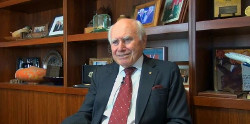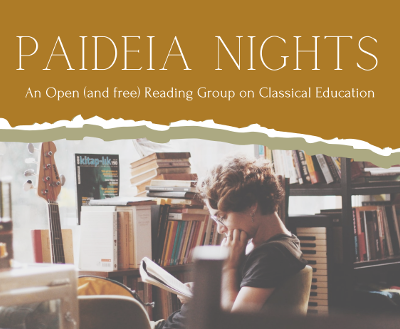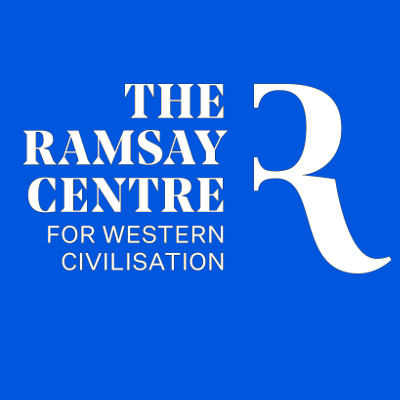The good Aeneas am I called, a name,
While Fortune favoured, not unknown to fame.
My household gods, companions of my woes,
With pious care I rescued from our foes.
(Aeneid, Book I, 372)
Heroes, be they real or fictional, win our hearts and minds partly by what they accomplish against challenging odds but mostly for who they are as people. We admire their character and aspire, as best we can, to emulate their virtues: the courage of Achilles, the wisdom of Socrates, the compassion of St Francis of Assisi or the adventurous spirit of Luke Skywalker. Even contemporary Australia impresses upon us her own values: mateship, tolerance, authenticity and equality, and praises those who embody them. Yet, there is one virtue that distinguished few heroes of old and certainly, it must be said, modern society finds little interest in it. It is the forgotten virtue, piety.
For the ancients and medievals, pietas was a fundamental quality of the “good man”, related, as it is, to both humility (wherein one’s proper relationship with others within a social and/or natural hierarchy was accepted) and justice (in fulfilling obligations that followed from this order). Famously, Cicero understood piety as a cardinal virtue and part of the natural law (ac naturae quidem ius esse… quaedam innata vis adferat, De Inventione II:65); he describes it as “urging one to maintain duty towards one’s country, parents and other blood relatives” (quae erga patriam aut parentes aut alios sanguine coniunctos officium conservare moneat, De Inventione II:66). Aquinas, borrowing in part from the Roman orator, added his own Christian gloss, writing:
And since it belongs properly to piety to pay duty and worship to one’s faith, it follows that piety, whereby, at the Holy Spirit’s instigation, we pay worship and duty to God as our Father, is a gift of the Holy Spirit (ST II:II.121).
In this, Aquinas realised that obligations naturally due to man are interrelated to those naturally due to God. Piety is precisely this ordinate love and response to God and neighbour: "You shall love the Lord your God with all your heart, and with all your soul, and with all your mind. This is the great and first commandment. And a second is like it: You shall love your neighbour as yourself” (Matt 22:37-39).
The natural law thus witnesses in our consciences this duty to be pious. In the East, Confucius developed his system of ethics entirely upon filial piety (孝), that there was right, harmonious behaviour towards others and towards God. And though our society pays lip service in honouring indigenous cultures, such as those of Indigenous Australians, it is quite content to ignore the strong sense of piety and reverence for elders, ancestors and tradition, present in those cultures, just as it is happy to jettison those of the West.
We have very short memories. The virtue that characterised that great hero Aeneas, that helped form the standard for the ancients, that Christendom believed came to us from Christ, is lost to the West today. We suffer from anomie, Durkheim's “sickness of the infinite”, where there is nothing to situate us and no realistic expectations to bring us “down to earth”. Moreover, we are increasingly becoming more like the unjust judge in Luke 18 who feels neither fear nor duty towards God or his neighbour but acts purely out of personal expediency. The consequences of an absence of piety in our children and citizens is evident for everyone to see.
Piety and classical education
Thankfully, classical education holds piety as at the core of a truly humane education. In their excellent book, The Liberal Arts Tradition: A Philosophy of Christian Classical Education, authors Kevin Clark and Ravi Scott Jain highlight how the loss of piety in the modern world may be at the root of much of our societal and ecological problems. By evacuating culture from a proper sense of place for humanity and what we owe to those realities that are higher than us, such as the earth and God, we have encouraged rebellion and an attempt at mastery over these forces. No longer is our species, individually and collectively, subject to the dictates of religion, the natural world, social hierarchies and even basic truths, such as those of bodily identity and sexuality.
By inculcating piety, classical schools order what we love and who we are; consequently, this will flow on to our relationships with others: fellow students, teachers and those in wider society. A very basic example is the role of manners, which are taught by parents to young children as a means of restraining selfish passions and shaping these same children to be more considerate of others. Piety in education is a form of cultivation: as a sapling is nurtured and pruned to enhance its flourishing as a tree, so the student, subjected to pious education, will be enhanced in her human faculties and will, while gaining a sense of self-mastery over more base desires and pursuits.
Additionally, piety promotes wonder as it builds gratitude and encourages us to look outside of ourselves to the great gifts we have been given: the natural world, the social world and the divine.
How can we be more pious?
Piety is not an academic subject taught in the classroom but enculturation, paideia, the transmission of a way of living towards kalos kagathos (the “beautiful and good”). A young person becomes more pious as she is introduced, over much time and through diverse means, to the ordered structures of reality and both consciously and unconsciously submits to them. While there are many ways of inculcating piety, let’s briefly explore three that benefit the classical school: texts, ritual and emulation.
The great works are ideally positioned to expose students to heroes who exhibit piety, often in dramatic contexts, like Aeneas, Antigone, King Arthur and the humble hobbit, Sam Gamgee. From their example, we can learn not only how we should behave but how, having a certain character, helps us through adversity. Of course, instruction from the Bible is of paramount importance here: the Commandments should not only be memorised but explored and cherished Additionally, the lives of early Christians and the saints present fine models. Jain and Clark suggest students should be taught in a way that situates them in space and time, as having a place in history and being part of a larger story, not simply an atomistic being that is free to pursue any ends; and that the content of literature and history courses can help do this.
This is substantiated through daily ritual, such as liturgies, chanting and singing psalms of praise, which help to arrange one’s actions and serve as a constant reminder of the presence of God and the worship due to Him. Additionally, acts of service to the community give us a chance to grow in humility, without which, we cannot be pious.
Lastly, the witness of pious, good adults. This, more than anything else, is what guides a student along the path of righteousness - to follow in the footsteps of the noble teacher. More broadly, to cultivate piety in young children, teachers and parents should pay close attention to the way they structure time, space, and language in their school or home: time for worship, service and leisure in spaces that are beautiful and honour God.
As Clark and Jain state:
“…piety is the central tenet of Christian classical education… And without a respect for this Western Christian heritage and a desire to emulate the great leaders and thinkers of the past, Christian classical education surely unravels. Without the students internalising a fundamental respect for God, their teachers, parents, and elders, the entire process of education likewise fails”.1
By returning to an education in piety, at home and in the institution, we can help return Australian society to a semblance of sanity and rationality. The disciplinary problems in our classrooms, the lack of respect in our youth and the poor public behaviour in our streets will, to some degree, be ameliorated by a more pious citizen, who feels strongly duty-bound to God and man.
1. Clark, Kevin and Ravi Scott Jain, The Liberal Arts Tradition: A Philosophy of Christian Classical Education, Classical Academic Press, Pennsylvania, 2013, p. 18.






